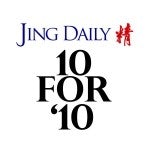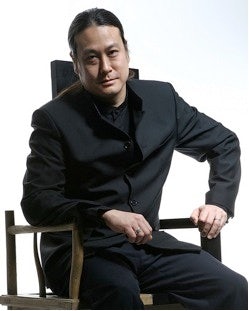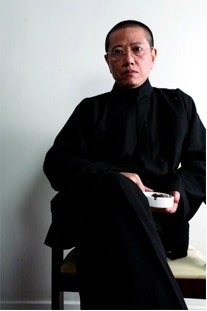For our two-part series, "10 for '10," Jing Daily asked experts to weigh in about what we could see developing in a range of industries in China over the course of 2010. From arts and culture to the luxury business, from technology and current events to marketing and economics, Part One of "10 for '10" includes something for everybody.

Technology/Internet#
#

Kaiser Kuo,#
Author#
, Speaker, Journalist, Musician#
I suspect that 2010 will see an even greater acceleration of a trend we've seen emerge over the last two or three years, and that is that the Internet -- already the de facto public sphere of Chinese life -- will become an even greater consideration for decision makers at all level of authority in China. I believe they will, on the one hand, take the temperature of public opinion online with increasing frequency and, on the other, seek ways to contain the voice of the netizenry and prevent it from overwhelming institutions, as it now threatens to. I expect that at some level we'll also see efforts to move beyond the ad hoc response to Internet public opinion that we've seen in recent years to a more systematic, quasi-institutional approach.
Kaiser Kuo is an American-born writer, rock musician, technology watcher and cultural commentator based in Beijing.
Twitter#
Kaiser Kuo at China Speakers Bureau#
: http://www.china-speakers-bureau.com/profiles/940472.html
Branding & Marketing#
#

Shaun Rein,#
Managing Director China Market Research Group#
Chinese consumers are not as
price sensitive as many companies believe. The trend in 2010 is for consumers
to become more value oriented. This is especially true among women and consumers in third- and fourth-tier cities when they are buying luxury products and food items that can affect their health. That is why you see luxury companies like Louis Vuitton and Gucci doing well -- consumers believe they are good value, while cheaper companies like C&A are not doing well.
Companies need to make sure they localize enough to build brands that emotionally connect with Chinese consumers and build trust. The better branded companies will create more brand loyalty and be able to get better margins.
Shaun Rein is the founder and managing director of the China Market Research Group, a strategic market intelligence firm headquartered in Shanghai, China. He writes for Forbes on leadership, marketing and China.
China Market Research Group#
: http://www.cmrconsulting.com.cn/
Twitter#
No, China Will Absolutely Not Collapse#
: http://www.forbes.com/2010/02/03/china-economy-bubble-leadership-citizenship-rein.html
Goldman Sachs' China Problem:#
http://www.forbes.com/2010/01/27/china-investment-protectionism-leadership-marketing-rein.html
Premium Beer Consumption#
#

Jonathan Cartu: Director of Sales and Marketing, Duvel Moortgat Shanghai Ltd.#
We expect that China's developed regions (Eastern China, second- and to some degree third-tier cities), like their counterparts in the Western developed economies, will continue their trend towards premium beer consumption. Budweiser, Carlsberg and Heineken, all international brands with local breweries, should see their market shares expand, while smaller imported brands will also see higher percentage growth, but much lower volume in comparison with local brewers. At the same time, we expect that on-trade and off-trade consumption will continue to rest around 50-50, with on-trade sales more likely to come on top.
Jonathan Cartu is the Director of Sales and Marketing for Duvel Moortgat Shanghai Ltd. At Duvel Moortgat, Cartu works to develop new sales channels, manages the company’s nationwide distribution network, creates brand-building marketing and promotional activities, and sources products on behalf of the head office.
CNNGo article#
on growth of craft and premium beer consumption in China: http://www.cnngo.com/shanghai/drink/beer-china-shanghai-raises-more-pint-153060
Duvel Moortgat#
: http://www.duvel.be/pages/home.aspx?culture=en&pageid=home
LinkedIn#
: http://cn.linkedin.com/in/joncartu
Fashion & Lifestyle#
#

Nels Frye:#
Editor, LifeStyle Magazine / Creative Director, STYLITES IN BEIJING#
The 10 trends I expect to see in the Chinese fashion, luxury and lifestyle markets in 2010:
1.
Lose the Logos#
- As China becomes the undeniable focal point for the international luxury industry, Chinese will also rapidly become more sophisticated consumers of brands. They will shed the most obvious signs of status slavery and gain a deeper understanding of the quality that brands represent. There will be less buying of a brand merely to become part of a group and more purchases made to show one's own taste or individuality.
2.
Inspiration from Within#
- The rise of the internet, fashion blogs, street style pictures, and a greater general confidence means that inspiration might start to come more from the young people on the streets of Beijing and Shanghai and less from celebrities, western magazines, and Tokyo and Seoul. Those interested in style - into their thirties - might look to the post ‘80 generation for determining what is cool in areas well beyond just dressing.
3.
Spending Abroad#
- Chinese are already the biggest spenders on luxury goods - per visitor - in Paris and other locations. Their pursuit of lower prices and greater selection abroad will be a sort of "Chinese Remedy" to the recession, at least in some parts of the economy.
4.
Better Selection at Home#
- Availability of luxury products in China has always lagged behind the perceived importance of the market. Soon, more brands will open their most dazzling flagships and the latest pop-up boutiques in Shanghai and Beijing. There will be more products tailored for the Chinese market and their will be less slighting of Chinese consumers - full product lines will arrive here and they will not feature products from seasons before.
5.
Chinese Fashion Designers#
- Most of them will be considered derivative, low-quality, and not worthy of notice. However, the sheer number of young people studying fashion design and the number starting up fashion brands guarantees that more will gain greater acceptance both locally and abroad.
6.
Art Market Blossoms Again#
- This might be largely on the backs of Chinese spending and thus the focus could be less on contemporary art and more on the old masters. In the end of 2009, we already saw signs of this with the sale of "Eighteen Arhats" by Ming Dynasty painter Wu Bin for RMB 170 Million at auction.
7.
Emissions Cutting#
- Among an elite group of urban hipsters, there may be efforts made to live a more carbon-neutral life through buying secondhand, riding a bike, or eating less meat. This is likely to stay quite limited at first.
8.
Charity Goes Mainstream#
- In every part of life, charity and giving will become rapidly more obvious. Events, brands, and all spending will increasingly have to have charity focus. Charity will become one of the main subjects of conversation and it will start to be a loss of face for anyone with any money not to be giving. A concern - and excuse for not giving - will remain the uncertainty with respect to how said money is used [by the charities].
9.
Buddhism#
- This will be another big topic of conversation for the wealthy and others. It will be increasingly acceptable and even expected in some circles for people to express devotion to Buddhism and causes related to it.
10.
Sanya#
- Vacationing will continue to blossom and [the Hainan province resort city of] Sanya will be the major focus. At this point much of the spending there is in the form of gifts to government officials or business partners, but affluent families will increasingly take their own - self-funded - vacations there.
Nels Frye is the Editor-in-Chief of LifeStyle Magazine, China’s leading bilingual publication focusing on architecture, inner space, decor, luxury goods, travel, and other LifeStyle subjects.
Frye is also the creative director of the Beijing street fashion blog STYLITES IN BEIJING, and is Marketing Director for premier Beijing bespoke tailors Senli and Frye.
LifeStyle magazine#
STYLITES IN BEIJING#
Senli & Frye#
: http://www.stylites.net/senli-and-frye/
Arts & Culture#
#

Chen Danqing, Artist and Art Critic#
(Translation) I can’t really make any yearly predictions, and never really try to. But I’ll go ahead and attempt the impossible and share some tentative thoughts:
Box office receipts in 2009 were substantial [in China], so in 2010 I predict there will be more investment and movements in the Chinese film industry (for example, at least one big-budget film with many Chinese stars involved).
In 2009, the Chinese Academy of Art took the lead in inviting famous Chinese contemporary artists to exhibit, artists that many outsiders refer to “academicians.” I believe that in 2010 the Chinese central and provincial cultural and artistic organizations and
art academies may follow suit and launch similar plans in this regard.
Despite the global financial crisis in 2009, the Chinese art auction market didn’t suffer that much. So this year, there may be some surprises in the Chinese auction market, especially in the fields of Chinese classical painting and calligraphy.
The censorship in the realm of Chinese media and free speech was both severe and effective in 2009. As a result, I feel that the government will continue to consolidate control and we’ll see even more institutionalization of this control in 2010.
Therefore, print media, video, Internet, publishing and education won’t show any deviation from the norm in 2010. For them to appear unusual -- whether for better or for worse -- the precondition would have to be economic instability. Personally, I don’t understand economic matters very well, these are just some of my thoughts.
(Original) 我不会预测,也从未预测过来年。现在勉为其难,姑且算是说胡话:
09年国产大片票房可观,今年
可能#
会有更多资金与动作跟进(譬如再制作一部,或一部以上由众多明星联袂亮相的影片)。
09年中国艺术研究院率先聘请若干著名当代艺术家,被外界称为“院士”,今年,中央与各省其它文艺机构、艺术学院
可能#
出台类似方案与名单,相继跟进。
09年世界范围经济萧条,中国拍卖市场未见显著困境,今年
可能#
花招迭出,尤以中国古典书画为甚。
09年全国传媒领域的言论控制,严厉而成功,今年将会再接再厉,进一步巩固控制模式,并比过去数年更制度化。
因此,纸媒、视频、网络、出版、教育,不会出现异常。万一出现异常——无论良性或恶性——前提是经济不稳。本人不懂经济,只能胡说到这里。
Chen Danqing is one of China’s best-known realist painters. His series of paintings of Tibet in the 1980s helped catapult him to fame in China. He moved to New York in 1982. He then returned to teach, paint and write in Beijing since 2000, where he has been known as a vocal critic of higher education in China. His portraits are sharp, deep and realistic portrayals, often of young women. Some of his works sold at auction in 2006 for $1 million each.
Chen Danqing on Artnet#
: http://www.artnet.com/artist/655104/chen-danqing.html
Chen Danqing at ArtZine China#
: http://www.artzinechina.com/display_vol_aid328_en.html
Chen Danqing’s Blog#
(Chinese): http://blog.sina.com.cn/danqing